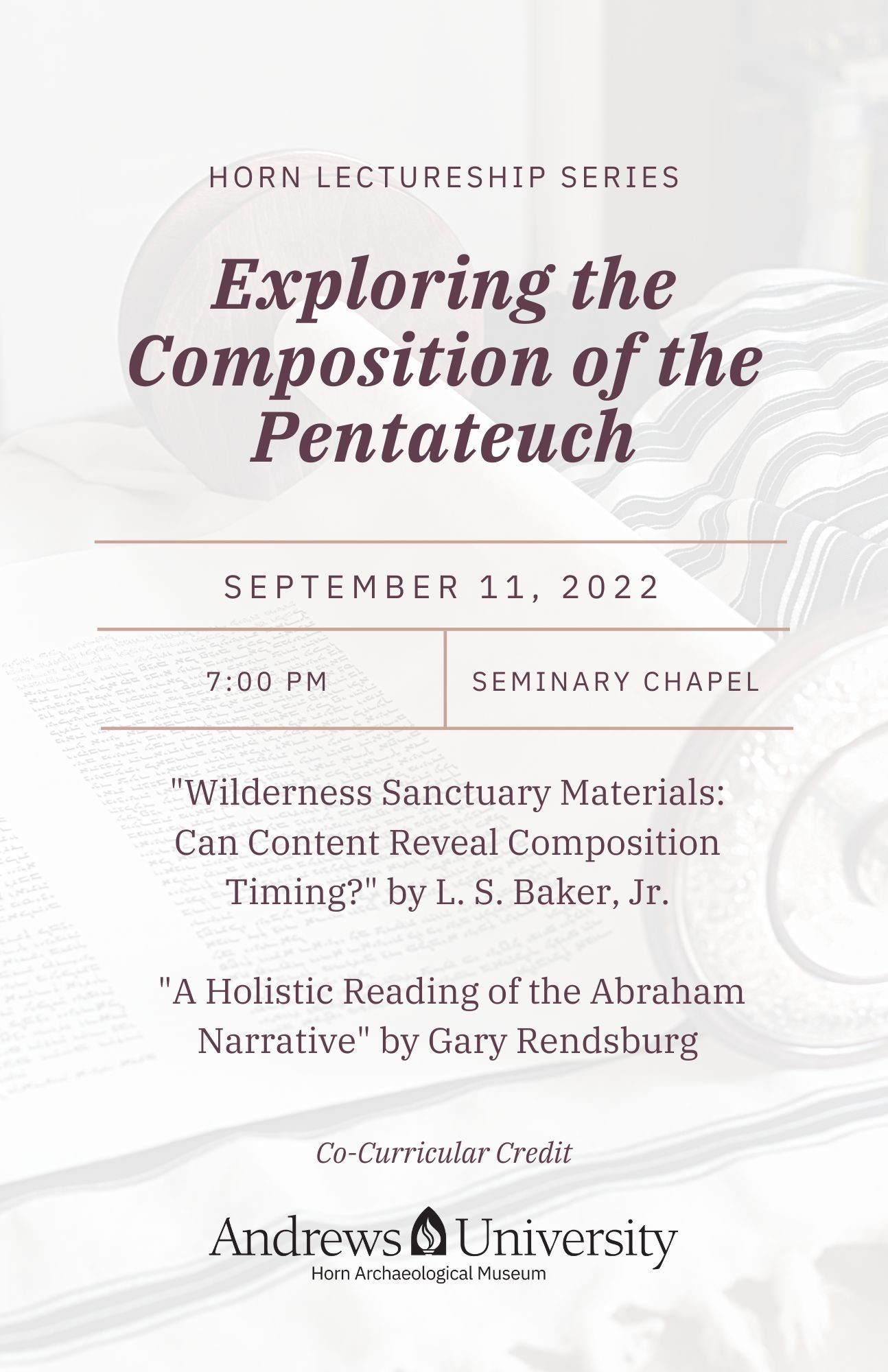Embodied Covenantal Instruction and Legal Reuse in Torah
Presenter Status
PhD student, Department of Old Testament
Location
Seminary Chapel
Start Date
5-4-2016 8:30 AM
End Date
5-4-2016 9:00 AM
Session
Interrelations of Legal Material in Torah
Presentation Abstract
Discrepancies between the different legal corpora have been and still are a major source of controversy in regard to the composition of the Torah. Critical scholars use the differences as argument that the differing laws were composed by different authors, for more or less conflicting purposes, given the various needs at different stages of the history of ancient Israel. Conservative scholars have tended to respond by attempting to harmonize the various laws. I will claim that there are two phenomena of legal reuse in Torah that need explanation. First, why do we find that legal reuse is relatively fluid, innovative, with different instructions at times standing in tensions? Second, why do we simultaneously find relatively clear cases of literary reuse? Adequate explanations of both phenomena seem called for. In this paper I will argue that how Torah is characterized and how we understand it as text inform how we also understand legal reuse within Torah. My intention is not to enter a discussion of concrete cases of legal reuse in Torah, though this will naturally be required, but to do a meta-analysis of the phenomena of legal reuse in Torah. First, I will draw from scholars like Raymond Westbrook, Dale Patrick, Bernard Jackson, Joshua Berman, and Michael LeFebvre that have more recently questioned a legislative conceptualization of Torah. Instead, I will argue that Torah should be conceived as covenantal instruction. Second, I will also draw from scholars like Susan Niditch, David Carr, and Raymond Person who have shown that Torah participates in the scribal culture of the ANE, which can be characterized as a text-supported oral culture where memorization and embodiment of revered texts was an ideal. In my opinion these two strands of scholarship merge into a helpful model for approaching legal reuse within Torah, where legal discrepancies can neither be adequately explained in simple source critically terms nor through forced harmonization. Such approaches to Torah might impose too much of a concept of law and text foreign to Torah while ignoring how the passages participate in a legal tradition and scribal culture very different from our own. The arguments in this paper do not rule out the possibility of a compositional history or the possibility of harmonizations not immediately apparent to the reader. But theories about the composition of Torah that do not account adequately for a proper characterization of Torah and the scribal culture it participates in will be flawed. In Torah legal innovations and discrepancies seem possible while they see themselves as loyal to earlier instructions.
Biographical Sketch
Kenneth Bergland did his MA in the history of ideas at the University of Oslo, with a special focus upon philosophical ethics in the 20th century. He is now working on his Ph.D. in Old Testament studies at the Seventh-day Adventist Theological Seminary, Andrews University. The topic of his thesis is the reuse of laws and norms between the Torah and the prophets as a model for applied biblical ethics. His wife Marianne and daughter Åsne help him to remember where life needs to be lived.
Embodied Covenantal Instruction and Legal Reuse in Torah
Seminary Chapel
Discrepancies between the different legal corpora have been and still are a major source of controversy in regard to the composition of the Torah. Critical scholars use the differences as argument that the differing laws were composed by different authors, for more or less conflicting purposes, given the various needs at different stages of the history of ancient Israel. Conservative scholars have tended to respond by attempting to harmonize the various laws. I will claim that there are two phenomena of legal reuse in Torah that need explanation. First, why do we find that legal reuse is relatively fluid, innovative, with different instructions at times standing in tensions? Second, why do we simultaneously find relatively clear cases of literary reuse? Adequate explanations of both phenomena seem called for. In this paper I will argue that how Torah is characterized and how we understand it as text inform how we also understand legal reuse within Torah. My intention is not to enter a discussion of concrete cases of legal reuse in Torah, though this will naturally be required, but to do a meta-analysis of the phenomena of legal reuse in Torah. First, I will draw from scholars like Raymond Westbrook, Dale Patrick, Bernard Jackson, Joshua Berman, and Michael LeFebvre that have more recently questioned a legislative conceptualization of Torah. Instead, I will argue that Torah should be conceived as covenantal instruction. Second, I will also draw from scholars like Susan Niditch, David Carr, and Raymond Person who have shown that Torah participates in the scribal culture of the ANE, which can be characterized as a text-supported oral culture where memorization and embodiment of revered texts was an ideal. In my opinion these two strands of scholarship merge into a helpful model for approaching legal reuse within Torah, where legal discrepancies can neither be adequately explained in simple source critically terms nor through forced harmonization. Such approaches to Torah might impose too much of a concept of law and text foreign to Torah while ignoring how the passages participate in a legal tradition and scribal culture very different from our own. The arguments in this paper do not rule out the possibility of a compositional history or the possibility of harmonizations not immediately apparent to the reader. But theories about the composition of Torah that do not account adequately for a proper characterization of Torah and the scribal culture it participates in will be flawed. In Torah legal innovations and discrepancies seem possible while they see themselves as loyal to earlier instructions.




Images